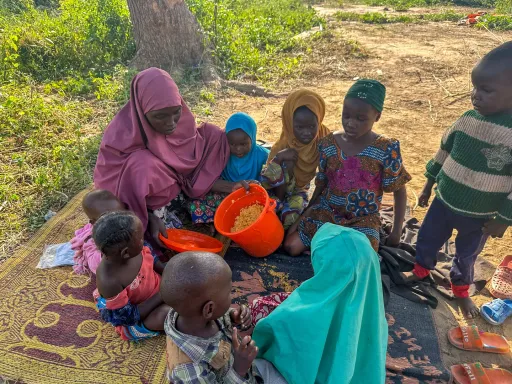By Charles Mgbolu
One of the collateral casualties of the ongoing conflict in Sudan is a humble plant exudate found abundantly in Africa's Sahel belt and harvested as a key ingredient of dozens of manufactured products consumed or used across the world.
Production and export of gum arabic, which goes into food, beverages, cosmetics, pharmaceuticals, ceramics, paints and textiles, among other products, have almost stalled in Sudan, the world's largest producer of this natural substance.
About 120,000 tonnes of gum arabic worth $1.1 billion are produced globally each year, according to the nutrition technology MNC Kerry Group.
While the Sahel region – spanning hundreds of miles from East to West Africa – accounts for an estimated 70% of the global output, the Sudanese conflict has cast a shadow on supplies.
Until the fighting that has cost more than 800 lives began on April 15, around 15% of Sudan's export basket would comprise gum arabic. In 2021, its revenue from gum arabic export alone stood at $111 million.
Gum arabic is a product derived from the hardened sap of the acacia tree. It is harvested in the form of dry, hard nodules and used primarily by the food industry.
The nodules, with fancy names such as "desert gold" or "blood tears", appear to look like gems that sparkle a bright orange under the African heat.
With each passing day, the bloody conflict between the Sudanese army and the rival Rapid Support Forces threatens to rob Sudan of its vantage position in gum arabic export.
The gum arabic supply chain has already been broken, leaving producers, exporters and the country in a limbo.
What lies ahead
Consumers of the highly valued product might soon be left with no option other than to look for alternatives.
Nigeria might see that as an opportunity as it is the largest producer of gum arabic in West Africa, according to the United Nations Conference on Trade and Development. It is also the third largest African producer and exporter after Sudan and Chad.
Nigerian agricultural economist Kevin Emmanuel doesn't discount the country's potential to fill those shoes, but believes that some key internal issues need to be addressed first.
"Nigeria’s gum arabic nodules come from the northern states of Bauchi, Jigawa, Plateau, Adamawa, especially Borno," Emmanuel tells TRT Afrika.
"However, it doesn't help that these are the regions that face a huge challenge in terms of security. The challenge with terrorism and banditry in those regions adversely limits the potential," he says.
Armed groups frequently carry out cattle rustling, kidnappings and killings in these regions, affecting agriculture and life in general.
Emmanuel says he knows farmers who have abandoned large commercial farms because of the depredations of armed gangs.
The challenges are not limited to issue of security. As Emmanuel points out, the yield from Nigerian acacia "is just not enough to compete for the top spot".
It takes between four and five years for wild-growing acacia to mature. This means that the trees must be at their optimum to make up for the years farmers wait for them to start producing sap.
Taiwo Saruma, an international dealer in gum arabic nodules, highlights another dimension to the problems.
"There is a huge demand for Grade 1 nodules of gum arabic. It is what is in demand out there. Sudan exports so much gum arabic because they mostly supply Grade 1. There is a scarcity of Grade 1 in Nigeria. We have just grades 2 and 3," he tells TRT Afrika.
Different grades of nodules are distinguished by colour and character, tree species and overall quality. Acacia senegal produces Grade 1, Acacia seyal yields Grade 2 and the Combretum tree contains Grade 3 nodules.
A drop in the ocean
Gum arabic derived from the Combretum or bush willow is readily available at low prices in West Africa. Compared to that from acacia, this is less valued and recognised by importing countries that use nodules as food additives.
A scarcity of acacia nodules leaves Nigeria at a disadvantage compared to Sudan, which produces its gum resin from the trunks and branches of the Senegal acacia and Seyal acacia species.
Data available with the United Nations Conference on Trade and Development shows that Nigeria produces over 5000 tonnes of gum arabic nodules a year, which is a drop in the ocean when compared to Sudan's annual output of 88,000 tonnes.
Saruma says a number of measures have to be taken by the West African country to fill the gap created by the Sudanese conflict.
"It's simple. We need more of these Grade 1 tree species. Once we do, we have a waiting international market ready to be seized."
The Nigerian authorities can also boost production through continued efforts in improving security situation in the gum-producing areas and providing "improved seedlings", economist Emmanuel points out.
Although most of the gum is produced in northern Nigeria, where insecurity has hindered production in recent years, the sought-after species such as Acacia dudgeoni, Acacia gourmaensis and some varieties of Acacia sieberiana are also found in some other parts of Nigeria such as the south-west region.
"The government must look at the all-round needs of the average Nigerian farmer. They need fertiliser, and they need modern farming machinery. These are all important for producing these nodules in commercial quantities," says Emmanuel.
Nigerian authorities say they have produced 22 million assorted seedlings for the take-off of a 15-year shelter belt and sand-dune stabilisation programme.
They hope to continue providing 22 million seedlings annually to sustain the initiative and boost production of gum arabic.
There are also other countries in Africa with high production capacity, including Mali, Senegal, South Africa, Kenya, Chad, Cameroon, Somalia and Ethiopia, among others. All of them have their own challenges too.
As international demand grows and Sudan's conflict continues, all eyes will be on which of the potential challengers leverage their advantages and surmount their weaknesses to seal the deal.
























